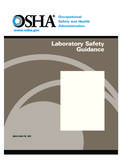Transcription of Health & Safety Laboratory Harpur Hill Buxton SK17 9JN
1 Crown Copyright 2006 Health & Safety Laboratory Harpur Hill Buxton SK17 9JN Furniture Distribution Guidance: Warehouse to Delivery. HSL/2006/87 Project Leader: Leanne Stanley Author(s): Leanne Stanley Science Group: Human Factors ii CONTENTS 1 Introduction .. 1 2 Risk 2 3 Solution 1: Pallets and Stillages .. 5 4 Solution 2: Fork Trucks / Pallet Trucks / Stackers / Order Pickers .. 6 5 Solution 3: Loading Bays / Ramps / Dock Levellers / Dock Lifts .. 7 6 Solution 4: Sack Trucks / Trolleys / Dollies / 8 7 Solution 5: Conveyors .. 10 8 Solution 6: Lorries and Tail Lifts .. 11 9 Solution 7: Portable Loading Ramps .. 12 10 Solution 8: Elbow and Shoulder Straps / Slings and Quilted Protection Covers .. 13 11 Solution 9: Carpet Handling 16 12 Solution 10: Delivery Issues .. 17 13 Summary .. 20 14 References.
2 21 iiiEXECUTIVE SUMMARY OBJECTIVE The objective of this report is to provide information to HSE Inspectors with regard to the risk factors involved in the furniture industry. This includes both warehouse and delivery environments, and the types of handling aids and devices that are currently on the market that may reduce the risk of injury to employees. FINDINGS HSE have identified a wide variety of manual handling issues that exist within the furniture industry. Some of the main problems identified occur within the warehouse and distribution areas and delivery of products. Particular concern was raised with regard to home delivery. Employees within the furniture industry are required to perform a variety of manual handling activities in order to move items within warehouses, to and from lorries, and during deliveries.
3 Delivery operators are placed at an increased risk of musculoskeletal injury due to the unfamiliar work environments they operate in and may also be affected by fatigue due to the long distances they can travel in a day. Some of the key risk factors relevant to this industry are the size and weight of the load and often the inability to get a sufficient grip on the load. These factors, particularly the size and weight of the load are difficult or impossible to change in order to make handling easier as furniture cannot be made smaller and lighter unless it is redesigned. Current trends in furniture design are seeing an increase in product size and weight, with oversized beds and mattresses and fridges being an example of this trend. The size and weight increase is likely to make handling products more awkward and will place all individuals along the supply chain who have to handle them at an increased risk of musculoskeletal injury.
4 RECOMMENDATIONS Communication and planning o As much information as possible should be obtained during point of sale with regard to delivery issues. o There should be clear communication lines between all parties, for example, retail outlets and the customers, retail outlets and the warehouse / distribution centres or manufacturers, and between delivery operatives and the customer. o For home deliveries 2-person delivery is advocated. Information for risk assessments o Items should be labelled appropriately, clearly identifying the product and the product weight. This will help across the supply chain, particularly with assessing the risk to employees who have to handle items. ivo Warehouse employees and individuals who work in retail outlets should be aware of how much items weigh, through clear labelling from the manufacturer and store them appropriately.
5 For example heavy items (20kg or more for men, 13kg or more for women) should be placed in middle shelves ( from upper thigh height to chest height) and lighter items should be stored on lower and higher shelves. Education about handling aids and their uses o Information needs to be disseminated to Inspectors and into the industry to make employers aware of what equipment could be useful in certain circumstances. o Sufficient training should be provided to employees on the use of handling equipment within the industry. The different areas: warehouse, distribution, retail outlets, and home delivery will all have different equipment that can be used. General recommendations o Trialling or hiring handling aids prior to purchasing them is a good way of checking that they are suitable for the job and avoid a poor idea being implemented widely.
6 O Handling aids should frequently be checked and maintained to ensure they are working effectively. o Where the use of handling aids is impractical team handling is beneficial, therefore 2-person delivery teams are beneficial to reduce the risk of musculoskeletal injury. o There needs to be further investigation into the use of elbow / shoulder straps / slings to determine their effectiveness in reducing the level of risk of injury operators are exposed to. Further investigation into the use of these, and the potential effectiveness of quilted protection covers with handles is also recommended. 11 INTRODUCTION HSE has identified a wide variety of manual handling issues that exist within the furniture industry.
7 Some of the main problems identified occur within the warehouse and distribution areas and during delivery of products. Particular concern was raised with regard to home delivery. This document is intended to provide information to Inspectors and act as a brief guide on a variety of handling devices that may be useful within the furniture distribution sector including both warehouse and home delivery environments. This document refers to furniture distribution and includes carpet handling but does not cover the issues with regard to white goods delivery. This document considers the typical working conditions for this part of the industry and summarises the key risk factors in terms of manual handling injury risks. Additionally, it provides information with regard to a range of handling aids and devices that may be useful in a variety of situations when handling of furniture is performed, with the aim to reduce the risk of manual handling injury.
8 None of the handling aids presented here have undergone detailed assessment and do not represent a comprehensive list of all handling aids and devices on the market. The introduction of handling aids / devices may introduce new risks that need to be monitored such as pushing and pulling. Individuals should be sufficiently trained in how to use these products in order to reduce the risk of introducing new hazards. 22 RISK FACTORS Employees working in the furniture industry have to perform a variety of activities that may place them at increased risk of musculoskeletal injury. These factors are considered below under the risk factor headings as presented in the Manual Handling Operations Regulations Guidelines, L23, (Schedule 1).
9 TASK Vertical Lift Region Often employees have to lift over a large vertical lift region (from floor height to above head height). This is particularly prevalent when loading or unloading delivery trucks in either warehouses or during home deliveries. If suitable loading bays do not exist within warehouses or lorries do not have tail lifts, employees have to lift heavy items up into, or lower them down out of lorries. The same problem exists when making home deliveries particularly if there is no tail lift and other handling aids are not being used. Additionally, the risk to delivery operatives may increase due to the unfamiliar environment and other environmental conditions that they are exposed to such as weather extremes ( heat, cold, strong air movements, and poor lighting).
10 Carrying Delivery operators also have to statically hold items when they are carrying them that can increase the strain on the lower back. Operators may have to carry large items such as sofas up flights of stairs where their postures will be constrained. If the load is put down to rest such as when negotiating large stairwells, they will then have to lift the load again, placing them at increased risk of injury. LOAD Weight Workers / employees frequently have to handle heavy and awkward loads. Items often do not have weights written on them therefore employees working in both warehouses and delivery situations may not be able to perform a comprehensive risk assessment.















